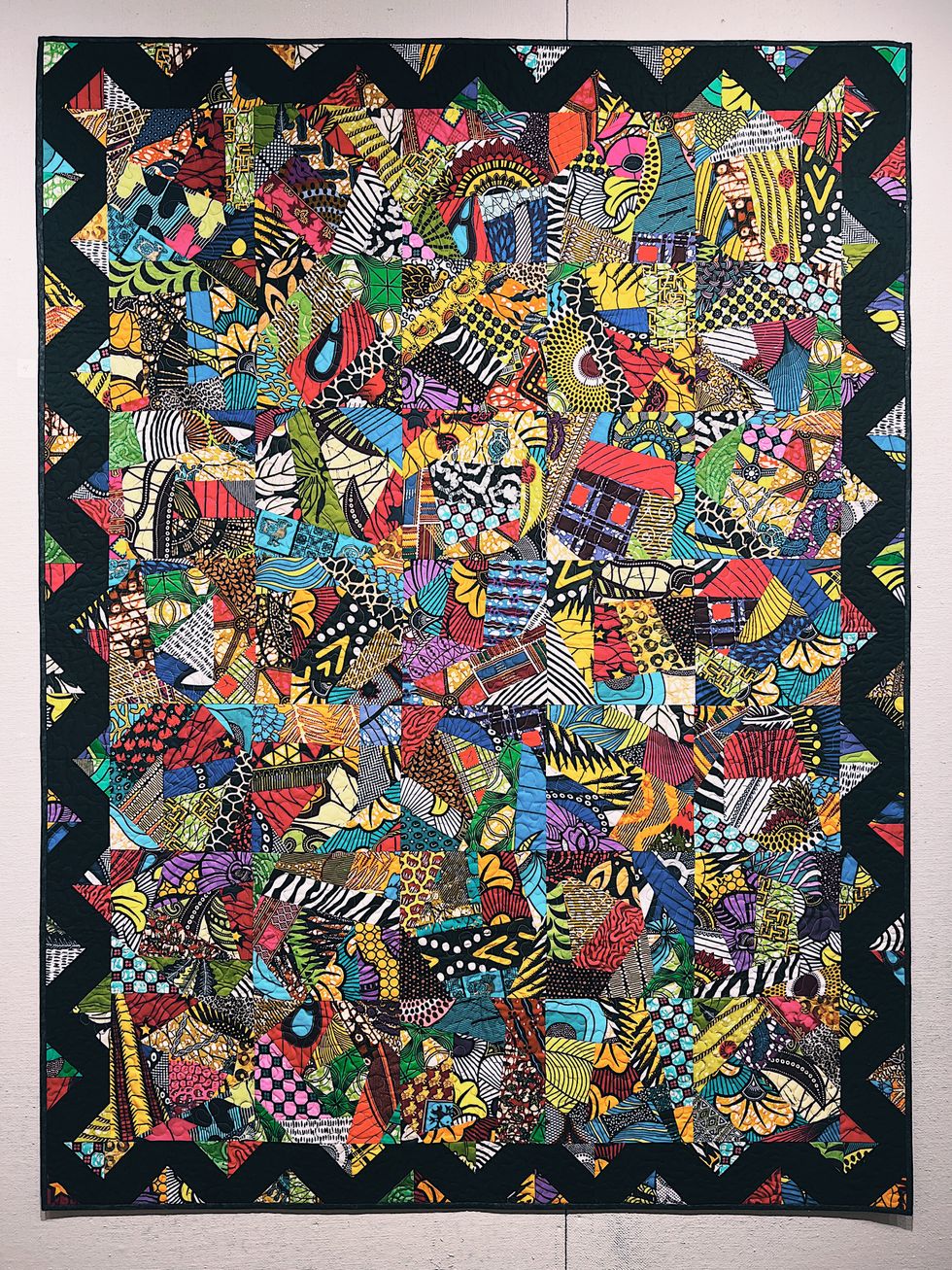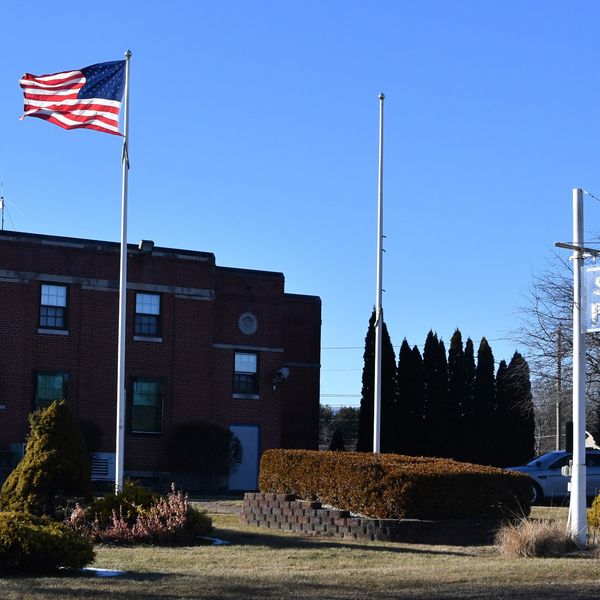Latest News
Left to right: Emi Night (Lead Educator), Luna Reynolds (Intern), Jill Winsby-Fein (Education Coordinator).
Natalia Zukerman
The Wassaic Art Project offers a free, weekly drop-in art class for kids aged K-12 and their families every Saturday from 12 to 5 p.m. The Art Nest, as it’s called, is a light, airy, welcoming space perched on the floor of the windy old mill building where weekly offerings in a variety of different media lead by professional artists offer children the chance for exploration and expression. Here, children of all ages and their families are invited to immerse themselves in the creative process while fostering community, igniting imaginations, and forging connections.
Emi Night began as the Lead Educator at The Art Nest in January 2024. She studied painting at Indiana University and songwriting at Goddard College in Vermont and is both a visual artist and the lead songwriter and singer in a band called Strawberry Runners.
Night sources her ideas for projects “from all over,” she said. “Sometimes we’ll pull ideas from artists in the shows [at The Wassaic Project] and if there’s something that seems like it would be fun for the kids, we’ll create a project around it.”
Night emphasized that the Art Nest is a drop-in opportunity as opposed to a drop-off class.
“Some families come in that are new in the area and don’t have a lot of parent friends,” Night said. “And they meet people here and develop a network. It’s a really cool space for that, and art is a great way to bring people together.”
Jill Winsby-Fein, Education Coordinator at The Wassaic Project also emphasized the community aspect of the offering. “We ask families to stay together, and that results in family art making that’s actually really special.”
Depending on the day, there can be up to 20 children and their families in the space. “Most days we have five or six kids at a time,” said Night.
The summer exhibition, “Tall Shadows in Short Order,” opens May 18 and the teachers expect an increase in attendance. The Wassaic Project has partnered with the Intern Project through the NECC (North East Community Center) and Luna Reynolds, a student at Webutuck Central School, is “our intern extraordinaire,” said Winsby-Fein.
“The projects I plan are geared toward kids ages four and up,” said Night, “but they are always adaptable to engage younger artists in sensory play and fine motor skill development. The average age range of attendees since I started working here in January has been three to 12. We do have materials and equipment more appropriate for teens like sewing and embroidery machines, jewelry and wire sculpture tools, button/pin-makers, and we’d love to have more teen artists working in the space.”
The program is funded through the Wassaic Project, which relies on grants, individual and donor funding, and artwork sales. Winsby-Fein is currently in the process of applying for various education grants to help fund the program.
“We have kids who walk from nearby and come every week,” she said. “A lot of the feedback I’ve gotten from families is about the community aspect.”
Families seeking to explore the world of art through The Art Nest are invited to drop by on Saturday afternoons. Visit www.wassaicproject.org for more information.
Keep ReadingShow less
A detail from a fabric-crafted wall mural by Carlos Biernnay at the annual Kent Arts Association fiber arts show.
Alexander Wilburn
The Kent Arts Association, which last summer celebrated 100 years since its founding, unveiled its newest group show on Friday, May 11. Titled “Working the Angles,” the exhibition gathers the work of textile artists who have presented fiber-based quilts, landscapes, abstracts, and mural-sized illustrations. The most prominently displayed installation of fiber art takes up the majority of the association’s first floor on South Main Street.
Bridgeport-based artist Carlos Biernnay was born in Chile under the rule of the late military dictator Augusto Pinochet, but his large-scale work is imbued with fantasy instead of suffering. His mix of influences seems to include Wolfgang Amadeus Mozart’s popular German libretto “The Magic Flute” — specifically The Queen of the Night — as well as Lewis Carol’s “Alice’s Adventures in Wonderland,” The Tudor Court, tantalizing mermaids and exotic flora.
Upstairs, Litchfield-based fiber artist Karen Griska’s large quilts take inspiration from African tradition, although she has also worked in the styles of Amish quilting as well as the Black American tradition of Gee’s Bend, which began in an Alabama town of the same name.
For more on “Working the Angles” and Kent Art Association exhibition viewing hours go to www.kentart.org

Keep ReadingShow less
Alison Robey
If last month’s solar eclipse taught me anything, it’s that we all still love seeing cool stuff in the sky. I don’t think we realize how fast astronomical wonders are fading out of sight: studies show that our night skies grow about 10% brighter every year, and the number of visible stars plummets as a result. At this rate, someone born 18 years ago to a sky with 250 visible stars would now find only 100 remaining.
Vanishing stars may feel like just a poetic tragedy, but as I crouch over yet another dead Wood Thrush on my morning commute, the consequences of light pollution feel very real. Wincing, I snap a photo of the tawny feathers splayed around his broken neck on the asphalt.
It’s not the only such photo I’ll take this year. The building whose towering windows took this thrush’s life is infamous; like many other passersby, I pay close attention to the ground around such spots to record any victims. We upload our morbid photography to iNaturalist, an app usually reserved for more cheerful records and identifications of flora and fauna, where they automatically join several citizen science projects focused on bird-window collisions.
Why the macabre gallery? These collections provide concrete evidence of just how many birds windows kill. Ideally, that information encourages tactics to reduce casualties, like lobbying homeowners and institutions to add decals or screens to their glass.
Though such measures are critical for limiting window strikes during the day, we often overlook the damage our windows cause at night. Remarkably, most bird migration actually occurs by moonlight; if you stand under the stars and listen during migration — which began in earnest last week — an audible chorus of chirps and buzzes overhead indicates a sky full of birds.
Birds evolved to fly under the cover of darkness for many reasons. Nightly travel means they can spend the bright, bug-filled days gathering food. Darkness helps migrants avoid predators, and the lower turbulence and cooler temperatures of nighttime skies allows for more energetically efficient flights.
Though the specifics of nocturnal navigation are a longstanding ornithological mystery, that navigation is undoubtedly disrupted by the growing brightness of the night sky. Bright lights disorient the birds’ sense of direction and attract them towards the light sources themselves. In that state of confusion, nocturnal window strikes skyrocket.
In the U.S., one billion birds die each year by flying into windows. Distinct behavioral changes around brightly lit structures are the main cause of mortality: the usual conversation of nocturnal flight calls grows into a confused cacophony. Those that avoid collisions face different risks: the energy they waste investigating unfamiliar lights means they’ll have a harder time avoiding predators, catching enough food, and reaching their final destinations.
The harm caused by light pollution is not limited to birds. Even in rural areas, many nocturnal animals struggle to adapt to brightening nighttime environments: bats can’t fly efficiently, amphibians can’t reproduce normally, and insects can’t forage effectively.
Humans aren’t immune either. Brighter nights disrupt our sleep cycles — something I can personally attest to, as someone who grew up in Kent and now struggles nightly with the brightness of New Haven — and are associated with a slew of negative health effects. And though people widely associate more lights with greater safety, evidence of this is mixed.
Despite the repercussions, the reach and severity of light pollution keeps growing. Electricity usage in the U.S. is on the rise again; while much of that energy has more intensive uses, the U.S. Energy Information Administration estimates that 6% of residential and 17% of commercial energy is all for lighting.
As disheartened as I am by increasing energy usage and vanishing stars, by unnecessary lights glaring from empty sports fields or barren storage facilities, and by dead songbirds on my morning commute, there is a silver lining to this story. Fixing most pollution problems — microplastics, oil spills, atmospheric CO2 — requires complex, intractable solutions. Light pollution, on the other hand, is completely, immediately, effectively reversible.
This is a critical time of year to make that change. The transition from April to May brings spring rains, bursting tree buds, and a deluge of migrating birds: cheerful songs of Yellow Warblers, gleaming feathers of Scarlet Tanagers, playful flights of American Redstarts. You can watch these migrants gather above your home like a rising storm using BirdCast, Cornell Lab of Ornithology’s avian version of a weather radar.
The closer that storm comes, the more important it is to flip those light switches off. Simple steps, like limiting the use of aesthetic lighting, keeping the beams of necessary lights targeted, dim, and warmly colored, or curtaining bright windows, make all the difference to our birds. Participating in darkening the skies this spring will help keep these little travelers aloft — and maybe bring some stars back into view, too.
Alison Robey is a writer for the Kent Land Trust, a volunteer at the Sharon Audubon Center, and a third-year PhD candidate in Ecology & Evolutionary Biology at Yale University.
Keep ReadingShow less
loading













